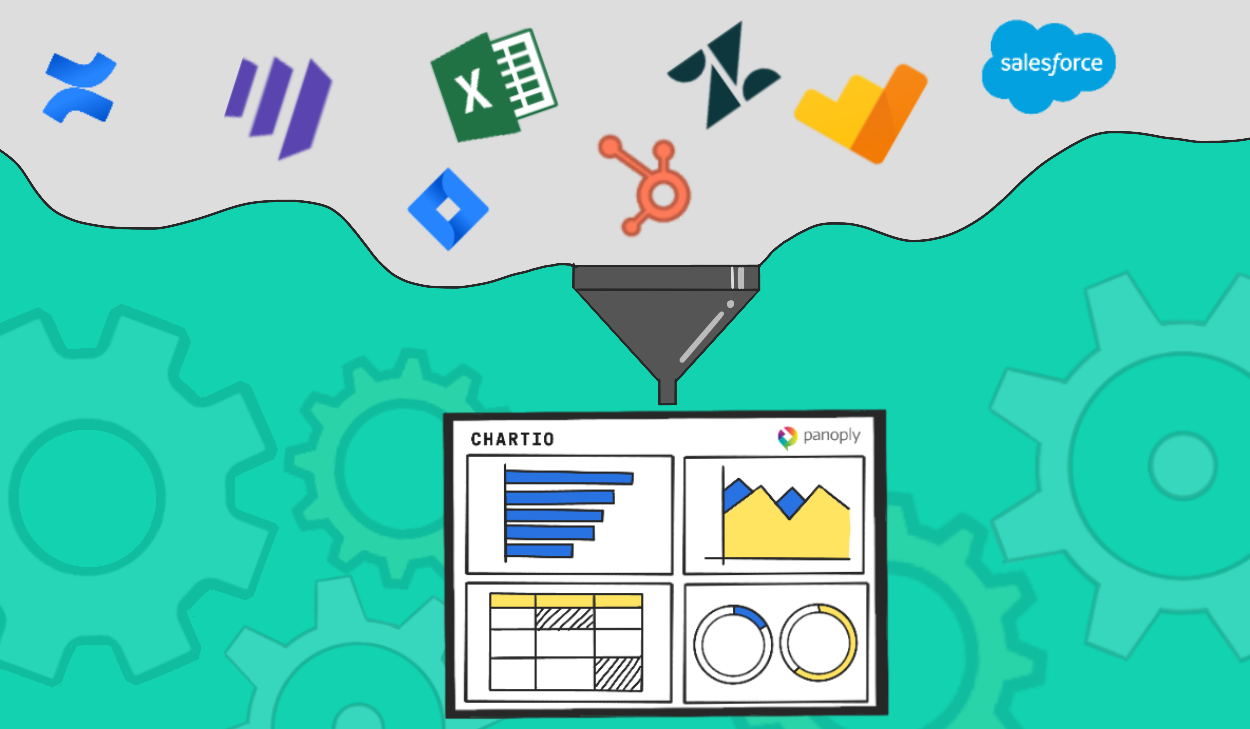What Makes a PM a Data-Driven Product Manager
Posted by on June 30, 2020 Chartio
This is a guest post by Carlos González de Villaumbrosia, CEO & Founder of Product School, a global leader in Product Management training with a community of over one million product professionals.
In almost any product circles, you’re likely to hear the term ‘data-driven product manager.’ Those currently job hunting in particular, might notice that many job postings will specify that ‘You will be data-driven.’
But what does it mean exactly?
On the surface, it looks like a data-driven product manager is just someone who looks at data in order to make decisions. But isn’t that what every product manager does? Without data there simply is no product management!
When we say data-driven product manager, what we actually mean is someone who thrives on data. If there’s an opportunity to make a decision based on numbers and not on instinct, they’ll take it. They know what questions to ask and how to get the insights they need to drive product development.
The Benefits of Data-Driven Product Management
We could talk for hours about how important data is for product development. But your time is valuable, so we’ll try to be brief!
1. Data wins arguments. “Without data, you’re just another person with an opinion,’’ said W. Edwards Denning. And he was right. If you’ve got to convince people that you’re right, and influence them without any official authority, you need the facts on your side. You can only tell a stakeholder that the feature they want isn’t a priority if you’ve got the data to show that, objectively, the customers don’t want it.
2. Data opens up new opportunities. For those who have backgrounds outside of data analysis, like marketers, it can feel like the numbers are taking over, and your instincts and creativity are being pushed aside. But that’s not the case at all! When you work with data you discover insights that you may not have seen otherwise. This opens up new avenues for innovation, and chances to let your creativity out.
3. Data is a career booster. Product Management is an incredible career path, but it is also a competitive one. Especially within the tech industry, the more data knowledge you can demonstrate, the better.
4. Data gives you freedom. In fast-paced companies where time is money (and in precious short supply for many PMs!) you don’t want to rely on anyone else to get your job done for you. Your teams will be more efficient the more they can do for themselves. This doesn’t mean that there’s no room for cross-functional collaboration. You should always find space in your work for that. But when there’s a smaller task, you’ll be able to work quicker and make decisions faster if you can execute them yourself.
Here a few things that a data-driven product manager does, which others may overlook:
Going Beyond Visualization
Most product managers by now are aware of the power of data visualization as a communication tool. And with so many user-friendly BI and data visualization tools out there, it’s fast becoming a staple of PM life.
While a product manager might use visualization as a handy tool to communicate insights with team members and stakeholders, a data-driven product manager uses visualization as a tool to ask more interesting questions.
When you go beyond the more basic tools offered by visualization tools (beyond the simple bar graphs and pie charts) you can start diving into real-time usage data and maps. Use visualization as a way to uncover new opportunities and new insights - not just as illustrations for your stakeholder meetings.
Making the Most of NPS/CSAT Scores
NPS and CSAT scores are nice enough. Lots of promoters and a high CSAT score makes us feel good and gives us a pat on the back. But as with all data, it’s wasted if you just leave it sitting there!
A data-driven product manager would be able to segment users depending on a variety of factors. Not all users are created equal! By segmenting the data, you might find differences in CSAT scores depending on whether the users are freemium, or paid subscribers. Or that your average CSAT score is being dragged down by users who got lost in the onboarding process, and the score of long-time users is actually much higher.
The same goes for NPS scores. You may find that your freemium users absolutely adore your product and want to recommend it to all of their friends! But your paid customers feel something is lacking, or that your product isn’t worth the price tag, becoming detractors.
Valuing and Utilizing Qualitative Data
Once you start becoming data-obsessed…sorry, data-driven, you might find yourself stuck in a whirlwind of quantitative data. But a good data-driven PM knows that qualitative data is equally important. You can’t build a product with just one type of data.
Don’t think that being data-driven only means focusing on the results of your A/B tests and visualizations of user demographics. You should also pay attention to what users are saying on reviews in the app store, what customer service reports to be the main lines of enquiry or complaint, and answers to questions in user interviews.
By blending your qualitative and quantitative data together, you can come away with some very important insights. For example, you might find that users who say the nicest things about you on the app store are predominantly from one of your foreign markets, where they favour Feature A. Those who leave less positive reviews come from a different region, and the majority are paid subscribers.
Making Data-Driven Roadmap Decisions
When you’re building your product roadmap, there are going to be lots of different voices and opinions flying around. That’s only natural. But you need to pick which voices are the ones to listen to.
An important stakeholder might be jostling for a certain feature. But if they don’t have data on their side, then their voice shouldn’t be the loudest. Whenever someone makes a suggestion, ask them what it’s based on. If a designer tells you that this thing is absolutely vital, you’re within your rights to ask them how they came to that conclusion. If they have no data to back it up, but you trust their instincts, as a data-driven PM you could offer to look into it with them. Deep dive into the data together to back up their opinions.
How to start your data-driven journey
Get to know your data team. They have the keys to all the answers you need! As people who have evidently educated themselves on data, they can point you in the right direction for your own learning. While you’re still learning the ropes, they’ll be your best friends for getting the insights you need for development.
Get comfortable with your data software. Most BIs come with some form of online training for their tool - either free or at low cost. If your company already uses third-party tools, you probably have a working knowledge of them. To get to the next level, do a deep dive into all its functionalities and features.
Build your SQL skills. As with learning any new programming language, getting to know SQL will be a bit painful, but the payoff will be huge! SQL allows you to bypass your data team (sometimes!) and avoid 3rd party analytics tools. It’s like having raw, unlimited access to your own data. Once you know how to wield it, that’s quite powerful! In terms of career, having SQL in your toolkit will be essential for going after Product roles up the ladder, such as Head of Product. It’ll also make you a more indispensable asset to a smaller company/startup who may not have the funds for a large team of data experts. Any opportunity you have to do something yourself instead of relying on others will be a huge boost to your work.
However you can also push your company to adopt a tool like Chartio which has a visual interface to SQL called rightly so Visual SQL. This makes it possible to create queries and make them dynamic without writing a single line of SQL. Visual SQL generates it for you for all the most popular databases.
Start testing. Eventually you’re going to have to get started! You might feel similarly to how you feel during the run-up to a launch. Nervous, unsure, and not-quite ready. But you’re going to have to start testing sooner or later! The key to early success is to collaborate with those who understand data better than you do. Work with your data scientists and your engineers to build the right tests, and gather the right results.
The most important thing to remember about being data-driven is who you’re going to impact the most: your customers. Data is your most reliable line of communication with them. Through data they’re telling you who they are, their likes and dislikes, and how they respond to what you’re building for them. Listening to data is really listening to your customers, and being data-driven is the quickest route to solving their problems, and delighting them along the way.

Carlos González de Villaumbrosia has over 10 years of experience building teams and digital products in the US, Europe, and Latin America. Carlos founded Product School in San Francisco in 2014. Today, the company is the global leader in product management training with 20 campuses worldwide and a live online campus.
Designed to fit into work schedules, classes are held in the evenings or on weekends. All the instructors are real-world product managers, working at renowned tech companies like Netflix, Airbnb, Google, Facebook, Amazon, and Paypal.
In addition to individual classes, Product School also delivers custom corporate training programs to Fortune 500 companies seeking to upskill their existing teams or onboard new talent.
Carlos is committed to pushing the product community forward. With this aim in mind, he published the Amazon bestseller, The Product Book. He also hosts Proddys - the annual awards honoring the best software products -, produces ProductCon - a multi-city conference attended by tens of thousands of product managers every year - and helps organize over 1,000 free events every year in 200 cities around the globe.


